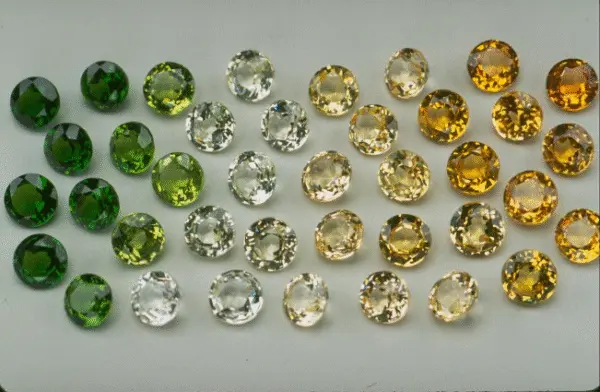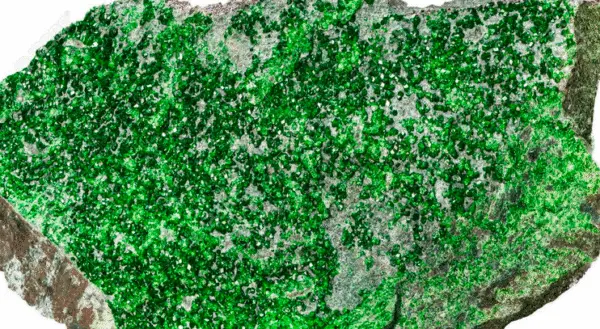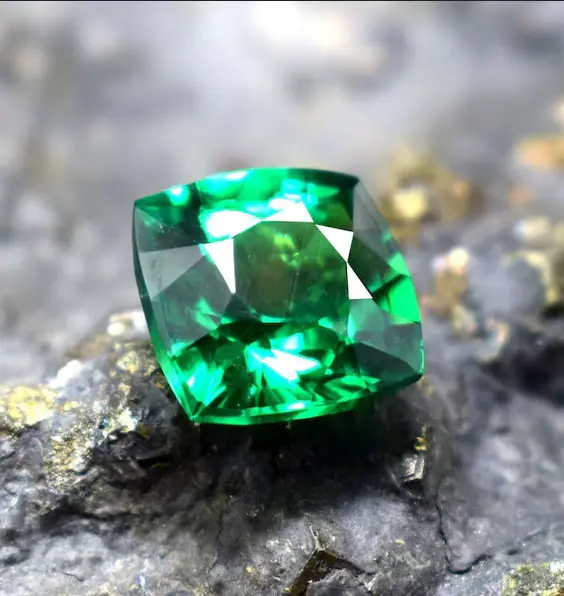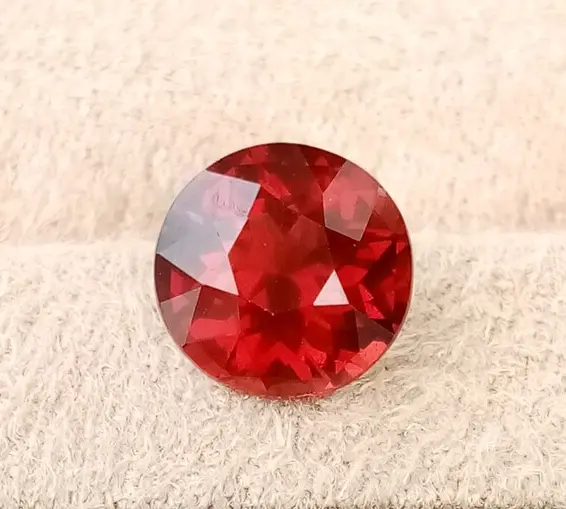
- Birthstone
Unveiling the Mystique of January Birthstone: Garnet
Table of Contents
January Birthstone: Garnet
Garnet, derived from the Latin word "granatus," meaning grain or seed, alludes to the gemstone's resemblance to the vibrant red seeds of the pomegranate fruit. This connection to the pomegranate is particularly significant, as the fruit has been a symbol of fertility, abundance, and renewal in many ancient civilizations. While commonly associated with a rich red hue, Garnet actually comes in a spectrum of colors including deep red, vibrant green, vivid orange, and even rare blue hues.
Garnet: The Timeless Gem of January
Garnet, the birthstone for January, has a rich history that dates back thousands of years. This stunning gemstone has been prized for its beauty and durability since ancient times, with evidence of its use in jewelry and decorative objects found in various cultures around the world
The deep connection between garnets and the month of January has its roots in ancient beliefs and traditions that have endured for millennia. Throughout recorded history, various cultures have attributed magical properties to gemstones based on their association with the Zodiac calendar.
Garnets in particular have long been linked to healing powers, protection from nightmares, and guidance during difficult times. The belief was that the gemstone corresponding to one's birth month aligned with the season, spiritual energy, and health. In the Middle Ages, wearing your birthstone was thought to provide spiritual healing and ward off evil.
Moreover, Garnet holds significant historical importance across different cultures. In ancient Egypt, it was cherished as a symbol of life and vitality, often entombed with pharaohs to accompany them into the afterlife. The Greeks and Romans adorned themselves with Garnet jewelry, believing it to imbue its wearer with courage and ward off evil spirits. Additionally, in the Middle Ages, Garnet was believed to possess medicinal properties, promoting good health and warding off diseases.
Garnets, the birthstone for January, were believed to have the power to cure inflammation, stop bleeding, calm anger, and promote sensuality. Beyond jewelry, garnets have been used for many practical purposes throughout history, from adorning royalty to serving as an abrasive material. The enduring significance of January's birthstone reflects the age-old human tendency to ascribe symbolic meaning and practical applications to gemstones based on their astrological associations.
Garnet's Symbolism and Importance
Over the ages, garnet has been linked with diverse symbolic interpretations. Ancient Greeks believed in its ability to shield wearers from harm and malevolence. During the Middle Ages, garnet was revered for its perceived healing qualities, used to address a range of maladies from melancholy to cardiac issues. Across various cultures, garnet has symbolized love and ardor, with its rich red hue often likened to the heart and blood, rendering it a favored selection for tokens of affection like engagement rings and sentimental gifts.
Garnet and its Remarkable Features
Garnet, a gemstone renowned for its exceptional brilliance and durability, has long been prized for its clarity, luster, and diverse color variations. This versatile mineral belongs to a group of closely related silicate minerals, each with a similar crystal structure but varying chemical compositions.
One of Garnet's most distinctive features is its exceptional hardness, ranking between 6.5 and 7.5 on the Mohs scale. This hardness, which is derived from the strong bonds between the silicate tetrahedra in its crystal structure, makes Garnet highly resistant to scratches and abrasions. This durability ensures that Garnet jewelry maintains its polished appearance for an extended period, even with regular wear.
Garnet's rich hues and high refractive index, which measures the speed of light through the mineral, contribute to its captivating brilliance. The specific chemical composition of each Garnet variety determines its color, which can range from deep red to orange, yellow, green, and even purple. This wide spectrum of colors has made Garnet a popular choice in jewelry and decorative arts throughout history.
The chemical composition of Garnet also influences its physical properties, such as its density and specific gravity. Almandine, one kind of garnet, for example, has a higher iron content and a specific gravity of approximately 4.3, while Pyrope has a lower iron content and a specific gravity of around 3.7. These variations in density can affect the weight and feel of Garnet jewelry.
In addition to its use in jewelry, Garnet has also found applications in various industries due to its unique properties. Its hardness and angular fracture patterns make it suitable for use as an abrasive in sandblasting and water-jet cutting. Garnet's ability to withstand high temperatures also makes it useful as a refractory material in furnace linings and crucibles. In conclusion, Garnet's remarkable features, including its exceptional hardness, diverse color variations, and high refractive index, have contributed to its enduring popularity and versatility. From ancient times to the present day, this captivating gemstone continues to inspire and delight with its natural beauty and unique properties.
what kinds of garnet there are?
Garnet is a diverse gemstone group with various species and color varieties, each possessing its own unique characteristics and allure. Here are some of the most prominent types of Garnet along with their colors:
Almandine Garnet:
Almandine is the most common type of Garnet and is typically deep red to reddish-brown in color. It may also exhibit purple or violet hues under certain lighting conditions

Pyrope Garnet:
Pyrope Garnet is known for its intense red color, often resembling the hue of ruby. It can range from a deep crimson to a vibrant purplish-red.

Spessartine Garnet:
Spessartine Garnet is prized for its vivid orange to reddish-orange coloration. It may also display yellow or brownish tones.

Grossular Garnet:
Grossular Garnet occurs in a variety of colors including green, yellow, orange, and pink. The green variety, known as Tsavorite, is highly valued for its vibrant hue.

Picture from: the Smithsonian National Museum of Natural History's website
Andradite Garnet:
Andradite Garnet encompasses several color varieties, including green (Demantoid), yellow to brownish-green (Topazolite), and black (Melanite). Demantoid Garnet is particularly renowned for its intense green color and exceptional dispersion, giving it fiery brilliance.

Uvarovite Garnet:
Uvarovite Garnet is a rare green Garnet variety characterized by its vibrant emerald-green color. It is typically found as small crystals and is valued for its rarity.

What types of Garnet are the most expensive varieties?
In terms of value and rarity, certain types of Garnet command higher prices than others. Generally, the most expensive varieties of Garnet include:
Demantoid Garnet:
Known for its brilliant green color and high dispersion, Demantoid Garnet is among the most valuable and sought-after Garnet varieties.

Tsavorite Garnet:
Tsavorite Garnet, prized for its vivid green hue, especially in larger sizes and top-quality specimens, commands premium prices in the gemstone market.

Fine-quality Pyrope Garnet:
Exceptionally rich red Pyrope Garnets, particularly those with a pure red color resembling ruby, can also fetch high prices, especially if they exhibit desirable clarity and size.

Overall, while the value of Garnet is influenced by factors such as color, clarity, size, and rarity, Demantoid Garnet and Tsavorite Garnet tend to be the most expensive varieties due to their exceptional color and scarcity in the gemstone market.
what kinds of garnet are suitable for jewelry industry?
There are several varieties of garnet that are suitable for the jewelry industry:
Pyrope Garnet: Pyrope is known for its intense red color, often resembling ruby. It can range from deep crimson to vibrant purplish-red, making it a popular choice for jewelry.
Almandine Garnet: Almandine is the most common type of garnet and is typically deep red to reddish-brown in color. It may also exhibit purple or violet hues under certain lighting conditions
Spessartine Garnet: Spessartine ranges from yellowish orange to red-brown in color and is a popular choice for jewelry
Grossular Garnet: Grossular comes in a variety of colors, including green, yellow, and brown. It is a durable gemstone suitable for jewelry
Andradite Garnet: Andradite is known for its bright green variety called Demantoid, which was highly prized in the late 19th century. It is a rare and valuable garnet variety
Tsavorite Garnet: Tsavorite is a vibrant green garnet known for its intense fire and brilliance. It is considered one of the most valuable garnet varieties

These garnet varieties are popular choices for jewelry due to their durability, ranging from 6.5 to 7.5 on the Mohs hardness scale, and their wide range of attractive colors. Garnets have been used in jewelry for thousands of years, from ancient civilizations to modern times.
what kind of garnet is associated with January birthstone?
The kind of garnet that is associated with January birthstone is the Red Garnet. Garnets come in a variety of colors, including red, yellow, orange, green, and blue, but the most common and traditional color linked with January's birthstone is red. Red garnets are often the most affordable option and are evaluated based on their tone, with lighter, more saturated red stones commanding higher prices. The red garnet symbolizes good health, wealth, and happiness, making it a fitting choice for those born in January
Garnet in Jewelry Pieces
Garnet’s timeless allure has inspired countless exquisite jewelry pieces crafted by renowned artisans around the world. From vintage heirlooms to contemporary designs, Garnet adorns an array of stunning creations that showcase its beauty and versatility. Here are some well known garnet jewelries:
The Antique Pyrope Hair Comb
This is no ordinary hair comb! This antique hair comb hails from the Victorian Era. Each of the pyrope garnets are rose cut, a popular cut during this era. The rose cut has a faceted top and flat bottom and gems were often mounted in yellow gold, gold plate, or mixed metals. Originally from mines in Bohemia, now part of the Czech Republic, Bohemian pyropes cover this gorgeous piece. Ales and Maria Herdlicka donated it to the Smithsonian Institution in 1937.(GIA)



Super Physical Features and Popular Appeal
Beyond its aesthetic allure, Garnet is revered for its purported spiritual properties and healing energies. Believed to stimulate creativity, promote emotional balance, and enhance vitality, Garnet is cherished by many as a gemstone that fosters personal growth and spiritual enlightenment:
Grounding and Stabilizing
Garnet is particularly connected to the Root chakra, helping to ground and stabilize one's energies. It aligns the chakras for optimal energy flow.
Enhancing Meditation and Spiritual Awareness
Garnet is used in spiritual practices to enhance meditation and increase spiritual awareness. Holding a garnet stone during meditation can help improve focus and connection to the base chakra.
Attracting Love and Relationships
In metaphysical practices, garnet is often used to attract love and soul companionship. It's believed to strengthen relationships and foster deep emotional connections.
Courage, Passion and Confidence
Garnet carries a powerful spiritual energy that symbolizes courage, truth, perseverance, passion and self-confidence. It encourages facing challenges with renewed power.
Cleansing and Balancing Chakras
Garnet is said to cleanse and balance the chakras, particularly the root and crown chakras. A balanced root chakra keeps one grounded and energized, while a balanced crown chakra opens the mind to new ideas and visions.
Protection and Guidance
In ancient times, travelers wore garnet gemstones for protection from accidents and to light up the night. Garnet is seen as a beacon of light in times of darkness, providing inspiration and emotional healing
So in summary, garnet is a powerful spiritual stone that grounds, stabilizes and aligns one's energies, enhances meditation, attracts love, instills courage and confidence, and provides protection and guidance on one's spiritual journey.
With its rich history, mesmerizing beauty, and profound symbolism, Garnet truly shines as a gemstone that captivates the heart and soul, embodying the essence of January and the promise of a new year filled with hope, joy, and prosperity.
Is Garnet expensive?
Garnet can vary in price depending on various factors such as quality, type, carat weight, color, and clarity. Generally, garnets are considered relatively affordable compared to other gemstones. The cost of a garnet can range from around $500 to $600 per carat for decently-colored gems with some inclusions, while cleaner, larger stones with excellent color can cost between $2,000 to $7,000 per carat. The rare demantoid and tsavorite garnets are among the most valuable types of garnets, with prices reflecting their rarity and quality. Overall, while garnets can be valuable, they are not typically as expensive as some other precious gemstones.
How can you tell if a garnet is real?
To determine if a garnet is real, there are several methods you can use:
- Visual Inspection: Real garnets should have a rich, saturated color. Look for any imperfections or inclusions within the stone, as natural gemstones often have some flaws.
- Clarity: Genuine garnets typically do not have eye-visible inclusions, especially for red garnets like almandine, pyrope, and rhodolite. In contrast, some orange garnets like spessartine and hessonite may have visible inclusions
- Certification: Obtain a lab report from an independent gemological laboratory to confirm the authenticity of the garnet. This report will provide detailed information about the gemstone's characteristics and authenticity.
- Consult a Professional: If in doubt, seek the expertise of a reputable jeweler or gemologist who can examine the garnet using specialized tools to verify its authenticity.
By combining visual inspection, clarity assessment, certification, and professional consultation, you can effectively determine the authenticity of a garnet.
what are the common cleaning methods for garnet jewelry?
The common cleaning methods for garnet jewelry include:
- Polishing: Before cleaning, it is recommended to polish the garnet jewelry to maintain its luster and appearance.
- Warm, Soapy Water: Clean garnet jewelry in warm (not hot) water using a mild detergent or non-abrasive jewelry cleaner. Gently scrub the jewelry with a soft-bristle toothbrush to remove dirt or grime.
- Avoid Harsh Methods: To prevent damage, avoid using steam cleaning, ultrasonic cleaning machines, hard-bristle brushes, bleach, toothpaste, or salt when cleaning garnet jewelry.
- Drying: After cleaning, dry the garnet jewelry with a soft cloth, such as a microfiber cloth, to ensure it is free from moisture and residue.
- Storage: When not being worn, store garnet jewelry in a soft cloth to prevent scratches from harder stones. Avoid storing garnets with extremely hard stones like diamonds to prevent damage.
By following these cleaning methods and precautions, you can effectively maintain the beauty and longevity of your garnet jewelry.
How many gemstones associated with January?
January has at least 5 major birthstones:
- Garnet - the primary and traditional January birthstone
- Onyx - a guardian angel birthstone for January
- Jasper - a special apostle birthstone for January
- Amethyst - the Aquarius birthstone, which can be considered a January birthstone
- Chalcedony - a Capricorn birthstone, which can also be considered a January birthstone
In addition, Rose Quartz and Opal are mentioned as secondary and complementary January birthstone. So in total, January has at least 5 major and official birthstones, with 2 additional stones that can be considered January birthstones depending on the source.
Related Posts
Fall in Love with Jewelry, Stories, and Secrets
Join Artemies Magazine for insider jewelry tips, trend updates, and subscriber-only discounts.



